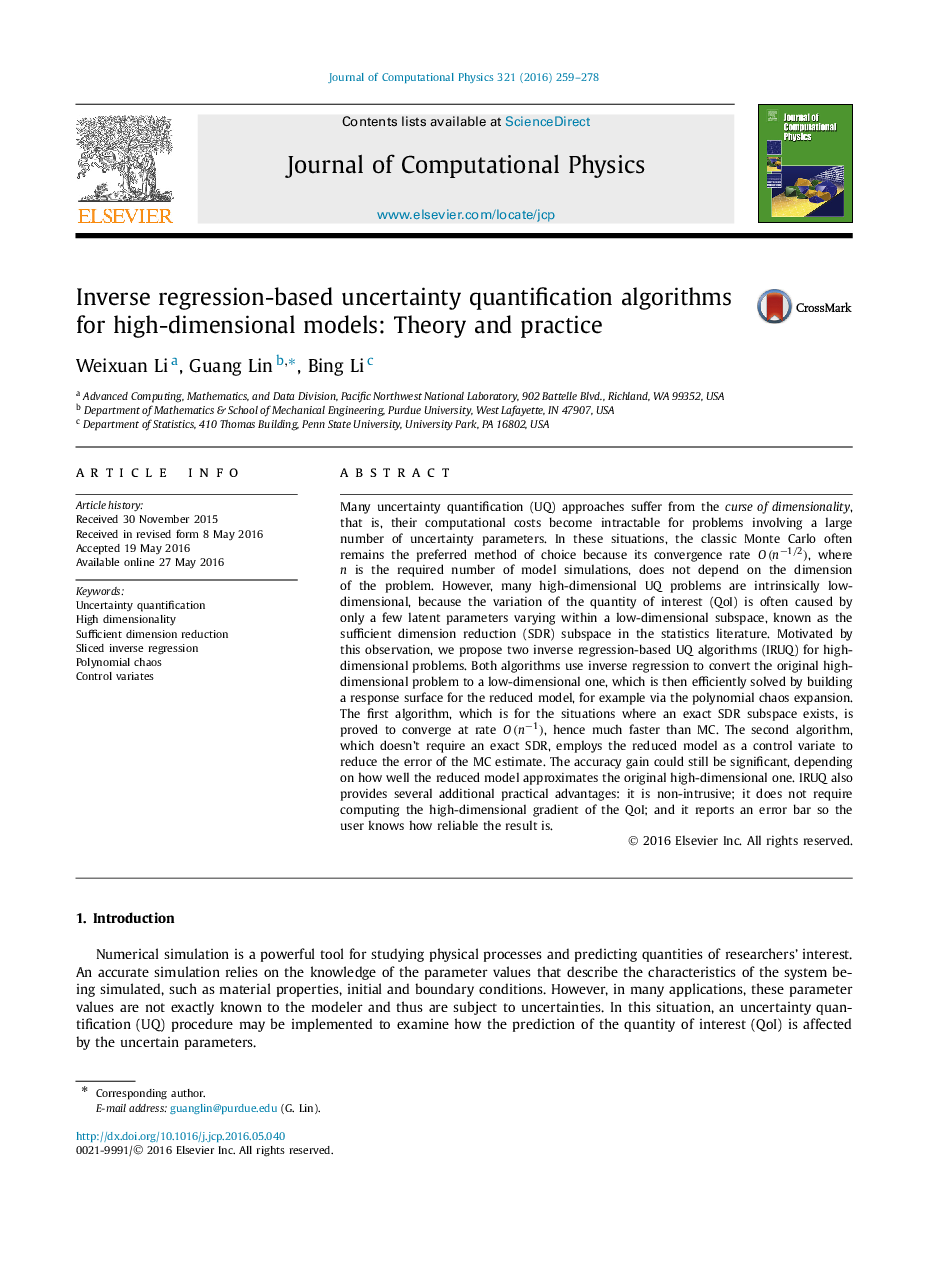| Article ID | Journal | Published Year | Pages | File Type |
|---|---|---|---|---|
| 6929767 | Journal of Computational Physics | 2016 | 20 Pages |
Abstract
Many uncertainty quantification (UQ) approaches suffer from the curse of dimensionality, that is, their computational costs become intractable for problems involving a large number of uncertainty parameters. In these situations, the classic Monte Carlo often remains the preferred method of choice because its convergence rate O(nâ1/2), where n is the required number of model simulations, does not depend on the dimension of the problem. However, many high-dimensional UQ problems are intrinsically low-dimensional, because the variation of the quantity of interest (QoI) is often caused by only a few latent parameters varying within a low-dimensional subspace, known as the sufficient dimension reduction (SDR) subspace in the statistics literature. Motivated by this observation, we propose two inverse regression-based UQ algorithms (IRUQ) for high-dimensional problems. Both algorithms use inverse regression to convert the original high-dimensional problem to a low-dimensional one, which is then efficiently solved by building a response surface for the reduced model, for example via the polynomial chaos expansion. The first algorithm, which is for the situations where an exact SDR subspace exists, is proved to converge at rate O(nâ1), hence much faster than MC. The second algorithm, which doesn't require an exact SDR, employs the reduced model as a control variate to reduce the error of the MC estimate. The accuracy gain could still be significant, depending on how well the reduced model approximates the original high-dimensional one. IRUQ also provides several additional practical advantages: it is non-intrusive; it does not require computing the high-dimensional gradient of the QoI; and it reports an error bar so the user knows how reliable the result is.
Keywords
Related Topics
Physical Sciences and Engineering
Computer Science
Computer Science Applications
Authors
Weixuan Li, Guang Lin, Bing Li,
